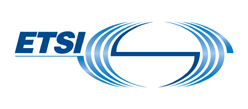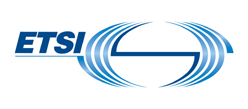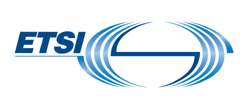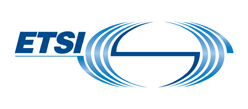Guideline for the develop-ment of deep learning image recognition systems
Procedure for data collection, structuring of data for learn-ing AI image recognition, process structure of learning experiments and quality assurance

Procedure for data collection, structuring of data for learn-ing AI image recognition, process structure of learning experiments and quality assurance

AI-specific requirements with regard to robustness, espe-cially regarding adversarial robustness and corruption robustness

Concrete relation to AI:

The Testing Framework (document format) specifies a testing framework defining a methodology for the development of the test strategies, test systems and resulting test specifications. The present document identifies the implementation under test (scope of the testing), the format for the test specification, the test architecture, the points of control and observation, the naming conventions (e.g. for test case ID and test case grouping ID), etc. It also provides the Implementation Conformance Statement which is basically a checklist for a client-owner so they know what parts of the specification will be tested and if any is optional. The ICS will be published as a separate GS.

The present document is a choice of Test Purposes Description Language (TPDL), with the intention to capture all of the information required by the Test Template and should be parseable using software.

The present document defines the organization or grouping of test cases based on the functionality to be tested (e.g. registration, subscription, query, etc.) and - most importantly - selects minimal subsets ("narrower scope") of functionality to permit testing of the main features of an operating NGSI-LD system.

The present document provides general security considerations and guidelines about the Message Queuing Telemetry Transport (MQTT) protocol. The collective ideas presented in the present document are enriched with example Test Purposes (TPs) to outline possible implementation

The present document describes the problem of securing AI-based systems and solutions, with a focus on machine learning, and the challenges relating to confidentiality, integrity and availability at each stage of the machine learning lifecycle. It also describes some of the broader challenges of AI systems including bias, ethics and explainability. A number of different attack vectors are described, as well as several real-world use cases and attacks.

The present document summarizes and analyses existing and potential mitigation against threats for AI-based systems as discussed in ETSI GR SAI 004 [i.1]. The goal is to have a technical survey for mitigating against threats introduced by adopting AI into systems. The technical survey shed light on available methods of securing AI-based systems by mitigating against known or potential security threats. It also addresses security capabilities, challenges, and limitations when adopting mitigation for AI-based systems in certain potential use cases.

This document specifies the general rules for an on-board data communication system between the different systems that may be used within public transport vehicles, based on the Internet Protocol (IPv4, [3] and IPv6, [4]). This includes operational support systems, passenger information systems, fare collection systems, etc. This document describes: - the requirements for an on board IP network; - the overview architecture and components for an IP based on-board network; - the modular structure of the network architecture; - the Service Oriented Architecture (SOA) approach, and approach to defining services. Systems directly related to the safe operation of the vehicle (including propulsion management, brake systems, door opening systems) are excluded from the scope of this document and are dealt with in other standardization bodies. However, the architecture described in this document may be used for support services such as safety information messages. Interfaces to safety-critical systems should be provided through dedicated gateways with appropriate security provisions; for the purposes of this document, these are regarded as simply external information sources. This document is designed primarily for vehicles with a fixed primary structure, where networks can be installed on a permanent basis and the system configuration task consists largely of the integration, adjustment or removal of the functional end systems that produce and/or consume data. Public transport vehicles consisting of units linked temporarily for operational purposes (specifically, trains in which individual engines, cars or consists are routinely connected and disconnected) require additional mechanisms to enable the communications network itself to reconfigure. Such mechanisms are provided through other standards, notably the IEC 61375 series [5].

The scope will be defined during the preliminary stage

The purpose is to define the tests to be performed in order to evaluate the performances of road applications’ GNSS-based positioning terminal (GBPT). To fully define the tests, this task will address the test strategy, the facilities to be used, the test scenarios (e.g. environments and characteristics, which shall allow the comparison of different tests), and the test procedures. The defined tests and process will be validated by performing various in-field tests. The defined tests focus essentially on accuracy, integrity and availability as required in the statement of work included in the invitation to tender. This document will benefit to: - The consolidation of EN 16803-1: "Definitions and system engineering procedures for the establishment and assessment of performances" - The elaboration of EN 16803-2: "Assessment of basic performances of GNSS-based positioning terminals" - The elaboration of EN 16803-3: "Assessment of security performances of GNSS based positioning terminals".
